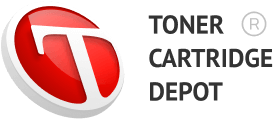For Business & Heavy Printing: Maximize Efficiency with Lexmark’s Smart Cartridges
Introduction: The Hidden Cost of Inefficient Printing Did you know that the average office worker prints about 10,000 pages annually, and for many businesses, printing costs can consume up to 3% of their total revenue? That’s a significant expense that often flies under the radar. For organizations with heavy printing demands, these numbers can be… Continue reading For Business & Heavy Printing: Maximize Efficiency with Lexmark’s Smart Cartridges
